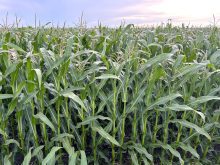Agriculture Canada is good at delivering financial help to farmers caught in large-scale disasters but rather tardy in assisting in smaller incidents, says Auditor General Michel Ferguson.
“Providing quick assistance to agricultural producers is a key goal of the Agri-Recovery program,” Ferguson says in his fall report to Parliament. Timeliness is important to getting farmers back in operation and was one of the key reasons the federal-provincial program was established.
“While Agriculture Canada has delivered assistance to producers for large disasters within their targeted timeline, those producers impacted by disasters with smaller total payouts often wait more than a year for financial help.”
Read Also

Canola’s clubroot success story
At one time, scientists, agronomists and growers were extremely worried clubroot would spread across the Prairies and devastate Canada’s canola industry.
The odd situation raises questions about how adequately the department manages Agri-Recovery, Ferguson says. For starters, it seldom meets “a 45-day target for assessments necessary to deliver quick, targeted assistance to get producers back in operations.” In one-third of the instances, Agri-Recovery took an average of 15.5 months to make payments. Its goal is 10.5 months.
“We found that the department did not have an adequate process to monitor timeliness, lacked real-time identification of delays, and did not monitor the timeliness of initiatives in the assessment phase,” Ferguson said. “The department does not ensure that it gets the information it needs to assess the timeliness of payments.”
As well, the department has not done enough research to determine whether Agri-Recovery is assisting producers in a timely fashion, he added. Nor does it have appropriate performance measures to assess how well Agri-Recovery helps producers recover. It doesn’t even “have a streamlined process for smaller initiatives even though they should be simpler to administer than large disasters.”
“Natural disasters impose significant economic and social consequences on individual farmers and the agricultural industry,” Ferguson said. “Those consequences include production and revenue losses and, in the case of some disease outbreaks, border closures that can have far-reaching effects.”
Agri-Recovery was established to fill gaps in existing government programming, and to provide quick, targeted assistance to agricultural producers so as to facilitate their return to business as rapidly as possible. Since the launch of Agri-Recovery in December 2007, federal and provincial governments have committed $1.2 billion to 37 disaster relief initiatives across Canada.














